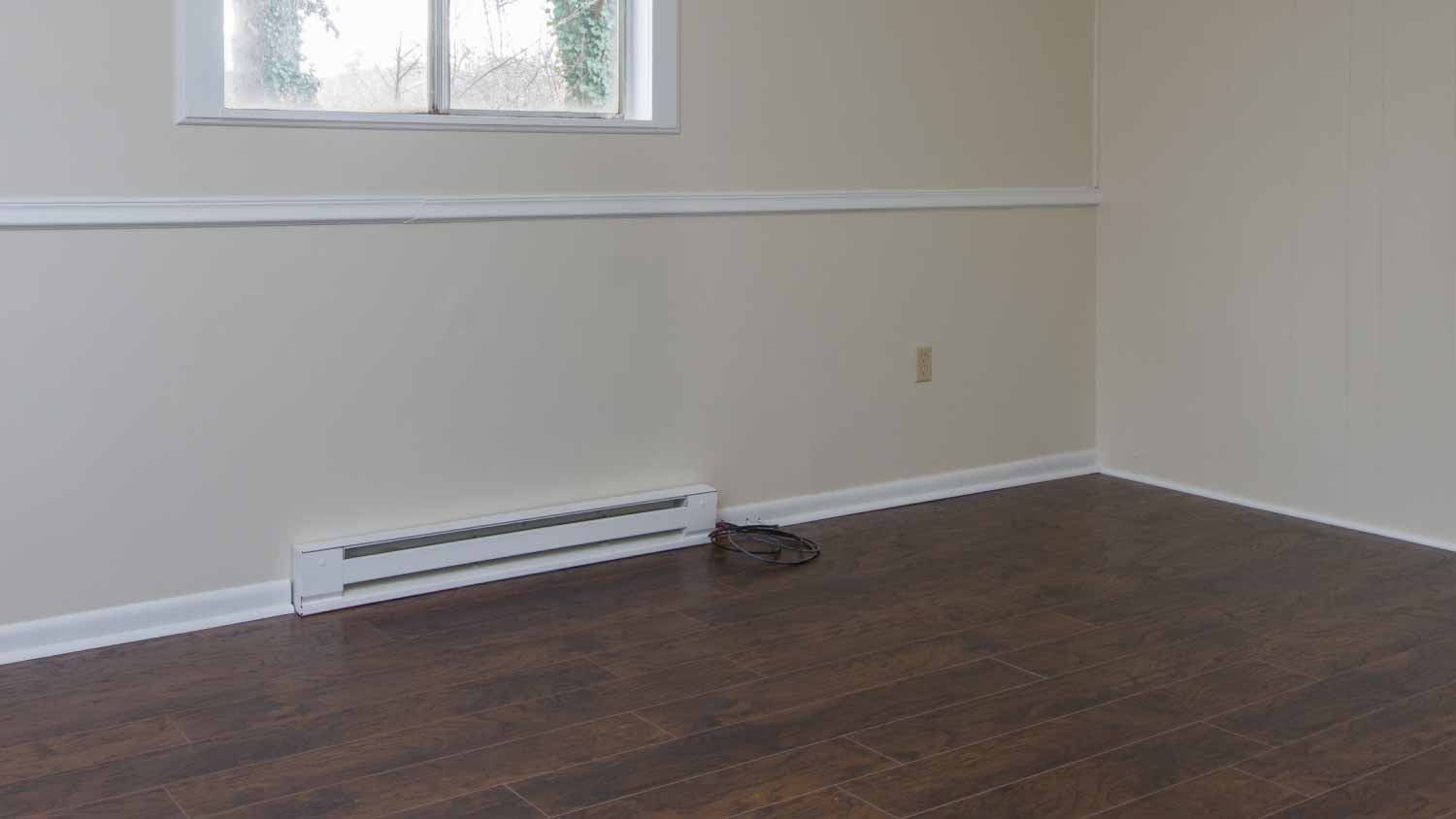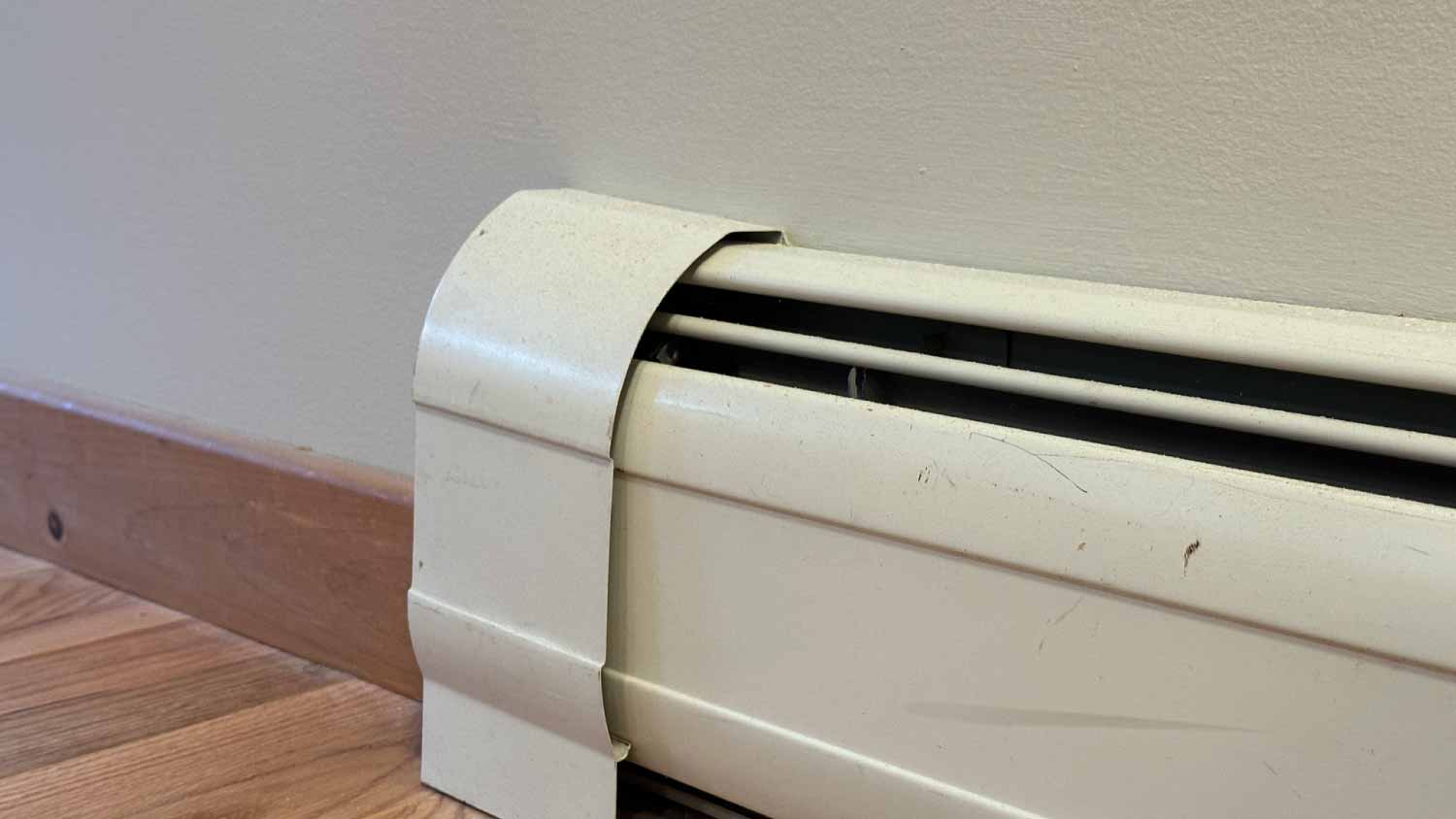How to Turn On Baseboard Heaters: 8 Tips for Running Your Baseboard Heater
Stay cozy with these tips for running your baseboard heater


Learning how to turn on your baseboard heaters is the answer to convenient and efficient coziness during the colder months without the need for complex ductwork or ventilation systems. These heating systems are very simple to operate, though there are a few key safety precautions and maintenance procedures to keep in mind. These tips will show you how to turn on a baseboard heater and keep it running efficiently throughout the chilly seasons.

1. Turn Your Baseboard Heater on by Adjusting the Thermostat

Similar to other heating systems, baseboard heaters are controlled using a thermostat, which is located either on the unit or attached to the wall. To use your baseboard heater, simply set the desired temperature on the thermostat, and the heater will activate until the thermostat senses that the target temperature has been reached. If the temperature decreases later on, the heater will turn on again to maintain the set temperature.
2. Use the Built-In Thermostat to Adjust the Temperature
If your baseboard heater has a built-in thermostat, you can adjust the temperature by rotating the knob. Turn the knob counterclockwise to decrease the temperature and clockwise to increase it.
3. Turn Off the Baseboard Heater Using the Thermostat
When you’re reducing the heat by turning the thermostat knob counterclockwise, you can keep turning it to shut the baseboard heater off altogether. Conversely, you can rotate the knob clockwise to turn the heater on again and increase the heat.
4. Close the Damper to Reduce Convection Heating
For convection baseboard heaters, you can adjust the heat by closing or opening the damper. By adjusting the damper to a narrower angle, you can prevent a room from becoming excessively hot.
Another way to adjust the damper is by manually tightening or loosening the screw located on the side of the baseboard heater, which may require removing the cover to access it. This is also a good place to double-check if your baseboard heater isn’t working in one room, as a closed damper is a common culprit.
5. Ensure the Heater Has Proper Floor Clearance

To ensure it functions efficiently, there should be at least 1 inch of space between the baseboard heater and the floor. This distance allows cool air to enter the heater from underneath and, once it’s heated, flow back out through the fins.
6. Keep Furniture and Curtains Clear of the Heater
A drawback of baseboard heating is that placing objects too close to heaters can pose a serious fire hazard and prevent the necessary airflow to keep your baseboard heater running properly. Curtains should have at least 6 to 12 inches of clearance between them and the heater, but it’s always best to err on the side of caution. Similarly, you should allow at least 12 inches of space between furniture and your baseboard heater.
7. Keep Your Baseboard Heater Clean and Well-Maintained
To prevent debris build-up and reduce fire hazards, we recommend cleaning your baseboard heaters annually to remove dust and dirt. If you have hydronic baseboard heaters, bleed the system once a year to maintain efficiency.
To ensure your baseboard heater operates efficiently, regularly vacuum out dust and debris, as these can clog the fan and affect its performance. At the end of the heating season, thoroughly clean and vacuum the unit. Before temperatures start dropping for the cool season, repeat the cleaning process to ensure optimal performance.
Consider purchasing a cover for your heater to protect it from dust when not in use. Using electric baseboard heater covers can help extend the lifespan of your unit and reduce clean-up time when it’s time to get it up and running again.
8. Hire a Pro to Install and Repair Your Baseboard Heaters

Baseboard heater not working? Attempting DIY repairs puts you at risk of injury, electrical shock, or damaging the unit. Similarly, learning how to replace a baseboard heater isn’t a safe DIY without the proper training and experience. Unless you’re well-versed in the task and the safety precautions involved, it’s always best to leave all installations and repairs up to a local baseboard installation specialist.





- Furnace Repair
- Air Conditioning Repair
- HVAC Repairs
- Furnace Installation
- Wood & Pellet Stove Repair
- Dehumidifier & Humidifier Repair
- Heat Pump Companies
- Swamp Cooler Repair
- Wood Stove Services
- HVAC Companies
- Commercial A/C Repair
- Geothermal Installation
- Air Conditioning Installation
- Boiler Repair
- 24 Hour Furnace Repair
- Geothermal Repair
- Heat Pump Repair
- Humidifier Installation
- Thermostat Repair
- Thermostat Installation
- Nest Installation
- Heating & Cooling
- Heating Repair
- Furnace Cleaning
- Furnace Tune-Up
- HVAC Technicians
- Subcontractors
- Furnace Maintenance
- Plumbing & Heating Companies
- Wood Stove Inspection
- Mini Split Installation
- Wall Heater Repair
- Duct Installers
- Baseboard Heater Not Working? 8 Common Issues and Solutions
- How to Turn Off Baseboard Heaters: Gas and Electric
- Who Replaces Baseboard Heater Covers? A Hiring Guide
- How to Replace Baseboard Heater Covers
- Can You Put Furniture in Front of Baseboard Heating?
- Baseboard Heater vs. Space Heater: Which is the Better Option?
- What Is Baseboard Heating? A Complete Guide
- Is Baseboard Heat Gas or Electric?
- What Is a Hydronic Baseboard Heater and Should You Have One?
- Electric Hydronic vs. Electric Baseboard Heater: Which Is Better?











